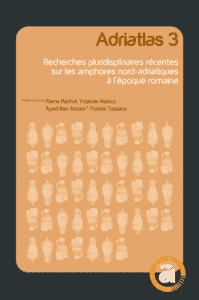UN@ est une plateforme d'édition de livres numériques pour les presses universitaires de Nouvelle-Aquitaine
Auteur : György Szakmány

Department of Petrology and Geochemistry,
Eötvös Loránd University
Budai alsó rkp.,
1117 Budapest (HONGRIE)
gyorgy.szakmany@geology.elte.hu
+36 1 372-2500/8356
0000-0002-9557-2030
Eötvös Loránd University
Budai alsó rkp.,
1117 Budapest (HONGRIE)
gyorgy.szakmany@geology.elte.hu
+36 1 372-2500/8356
0000-0002-9557-2030
Geologist (petrologist). He works as associate professor in the Department of Petrology and Geochemistry, Eötvös Loránd University, Budapest, Hungary. He has started his archaeometric researches more than 35 years ago. In the last twenty five years archaeometry is his main research topic. Inside archaeometry he is dealing with polished stone tools, particularly to outline or determine the provenance of their raw materials. Beside petrographic analyses, with his colleagues and his PhD students he works using different non- destructive/non-invasive techniques to analyse the stone artefacts, namely by magnetic susceptibility, prompt gamma activation analyses, non destructive SEM-EDX analyses on the original surface of stone tools. Moreover, he has analysed geological samples from the potential provenances with the same methods. His other main topic is to analyse ceramics. He studies them by petrographic and SEM-EDX method from different archaeological ages, mainly prehistoric pottery and Roman Amphorae; to analyse their composition, production technology and provenance of their raw materials. Also he has performed comparative analyses from several potential raw material sources collected from the possible provenances.
Articles pdf in Geologica Carpathica

From the early Roman period (Augustan to Hadrian times), Istria (North Adria, Croatia) was one of the most important sites for the production of olive oil. The oil was transported in the traditional Dressel 6B amphorae to north Italy and the provinces of Noricum, Raetia and Pannonia.

